The subject of skin absorption and cosmetics is full of inaccuracies. While it is important to take chemical absorption through skin into account – it is, after all, the basis for many people switching to natural cosmetics – you can’t believe everything you read.
For starters, that 60% figure that is so commonly thrown around? It’s really misleading. A study that showed an average of 64% skin absorption rate was using solvents like toluene, xylene, and methylene chloride as the compounds tested for skin absorption. Solvents have an exceptional ability to disrupt the skin barrier, so the skin absorption rate for a solvent will be higher than most other compounds. Yet many companies and websites have posted that finding repeatedly as if it applies to everything.
Unfortunately (or maybe, fortunately) the facts on chemical absorption through skin aren’t that simple. For starters, there’s a big difference between skin penetration and absorption, and not all ingredients absorb into the skin in the same amount. There are also variations in what the body holds onto, chemical wise, and how chemicals react in the body once they are absorbed.
Learning a bit more about the truths of dermal absorption will leave you better able to choose what’s right for your skin and body. And you don’t need a degree in chemistry to figure it out.

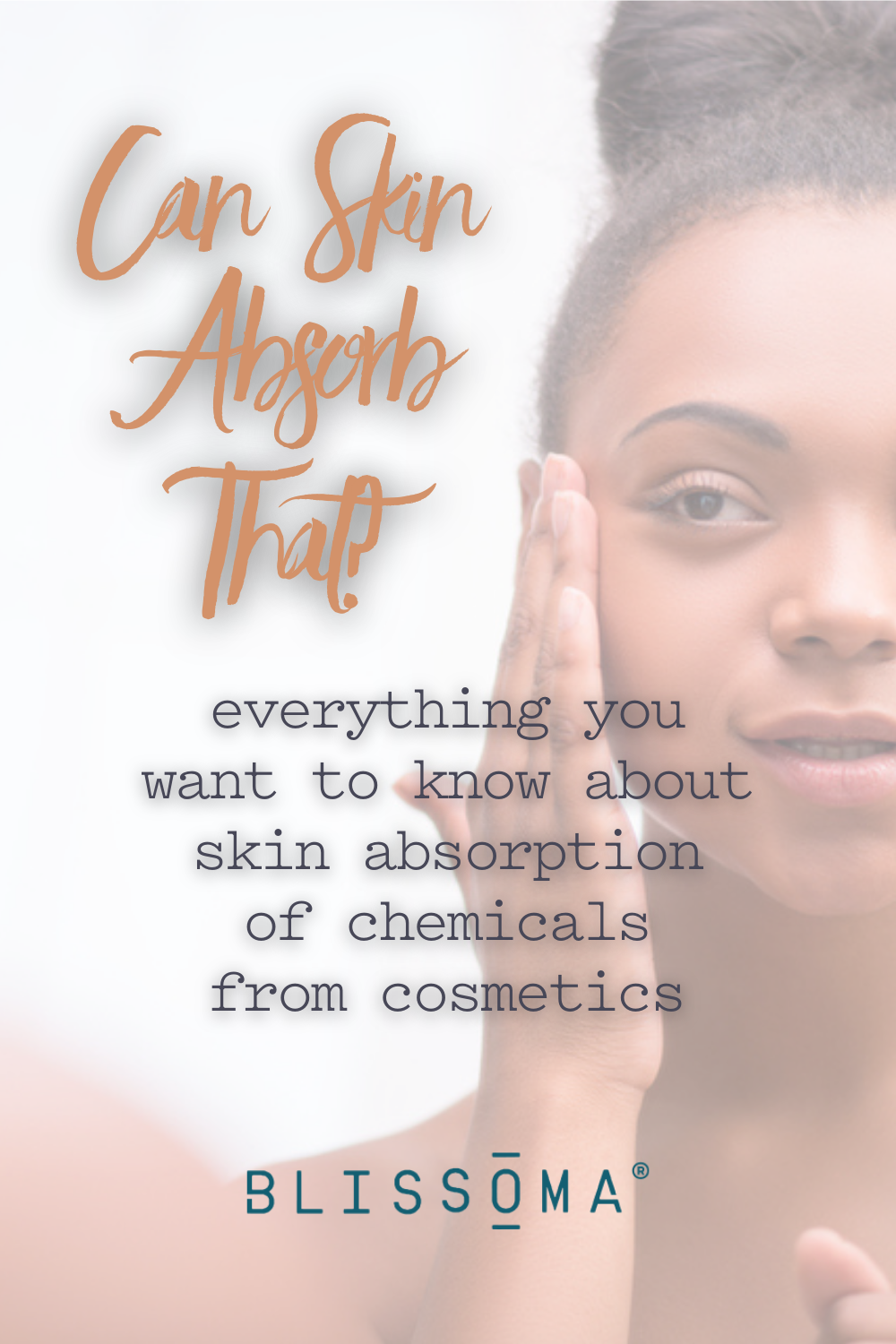
The Difference Between Skin Absorption and Penetration
Before we get too deep into the subject of skin absorption rate, it’s essential to know the difference between penetration and absorption. While they sound very similar, and are often used interchangeably in the cosmetics world, there is a big distinction.
When a chemical penetrates the skin it makes its way past the stratum corneum (the outer layer of skin) and into skin’s deeper layers. Absorption is when a chemical enters the bloodstream. You can see the enormous difference.
With skincare penetration is ideal. Ingredients will do their best work to hydrate and condition if they can get into the skin, but not leave the skin itself.
Wondering if all ingredients eventually absorb? Since chemicals come in different sizes and have different absorption rates, not all of them are able to absorb into the body.
How and How Much Does Your Skin Absorb
There are three ways that chemicals enter into skin.
Intercellular absorption -
Ingredients can absorb through the “glue” between cells of the stratum corneum. The intercellular lipid material is made up of ceramides, cholesterol, cholesterol esters, and fatty acids. The fact that it is oil based means that oils have a good chance of absorbing this way, while water based ingredients will be repelled since oil and water do not mix well.
Intracellular absorption -
The second route of absorption is through the dense, functionally dead cells of the outermost layer of skin, the Stratum Corneum. This layer of skin is 15 to 20 layers thick. Only very tiny molecules can absorb into skin this way.
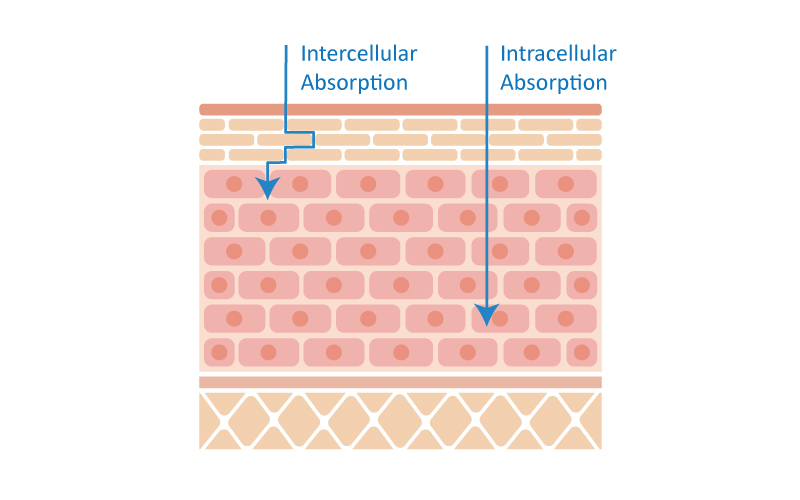
Transappendageal or follicular absorption -
Compounds can enter skin through the openings that already exist in your skin as conduits between the lower and upper layers. Pores and hair follicles reach down past the upper layers of the epidermis and into the dermis where blood vessels nourish the skin. The pores and hair follicles represent only about .1% of the total surface of skin, so they are less likely to be the main avenues of skin absorption. However certain types of molecules may prefer the follicular route for skin absorption, so it depends on the type of compound in question.
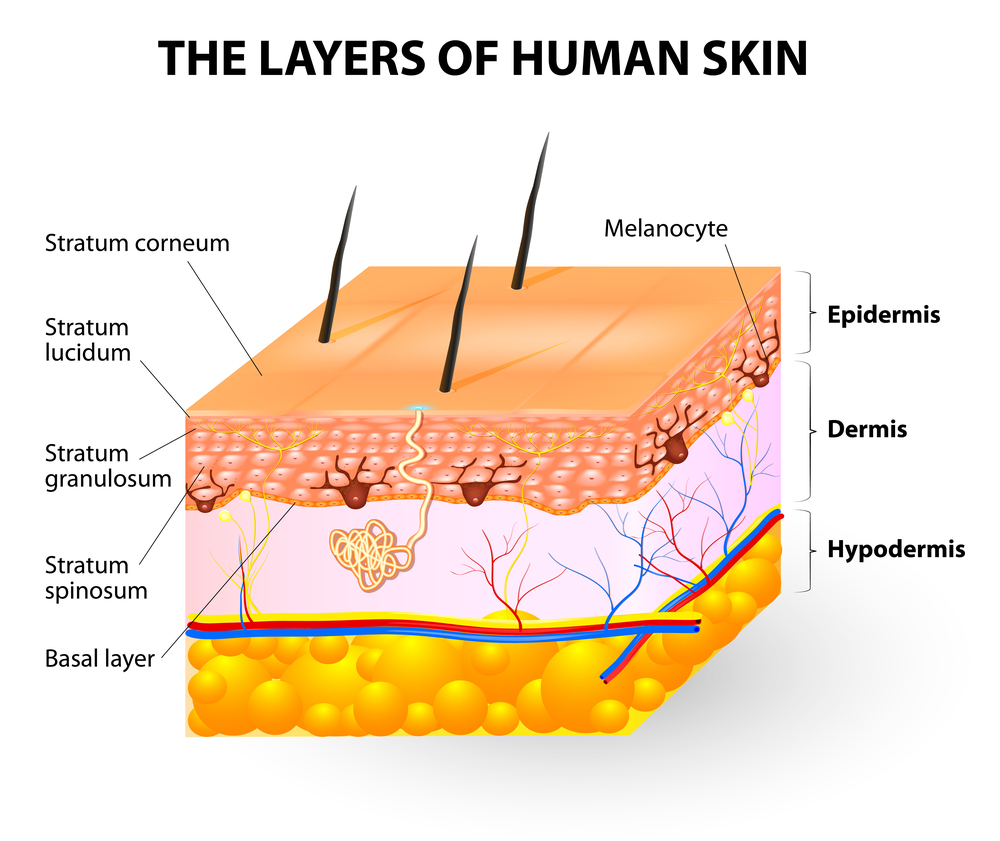
When you think of, say, ingredients intended to decrease the appearance of aging in the skin, you probably envision them acting on the uppermost layers of skin, right? But once ingredients come in contact with the dermis (the second layer of skin) they reach live blood vessels and structural tissue like collagen and elastin. This gives ingredients in your skincare a chance to make skin look firm, tight, and plump. It also means those compounds circulate into lymph and blood, so the healthier the ingredient, the better.
Another reason it pays to be selective with the ingredients in your skincare is that skin is thinner on the face than other areas of the body, like hands and feet. Ingredients more easily absorb into skin when applied to the face and this is why facial skin is more reactive to ingredients.
Duration of contact is also a factor in skin absorption of cosmetic ingredients, as is the condition of the skin. If your skin is damaged through removal of some of the Stratum Corneum cells it will be more permeable and dramatically increase the skin absorption rate because the stratum corneum is not fully intact. This becomes especially important in relation to skincare that contains potentially unhealthy compounds and puts people with skin problems – like acne, eczema, and psoriasis – at additional risk of potential side effects.
Which Chemicals Can Skin Absorb?
Not all ingredients may make it into the bloodstream but the toxic body burden is very real. Research shows chemical sunscreen and triclosan in 74.6% of individuals tested and phthalates in more than 75%. And it’s not just adults who are affected. A 2008 study found 16 hormone-altering cosmetics chemicals in teen girls tested and an astounding 287 chemicals in the umbilical cord blood of 10 newborn babies.
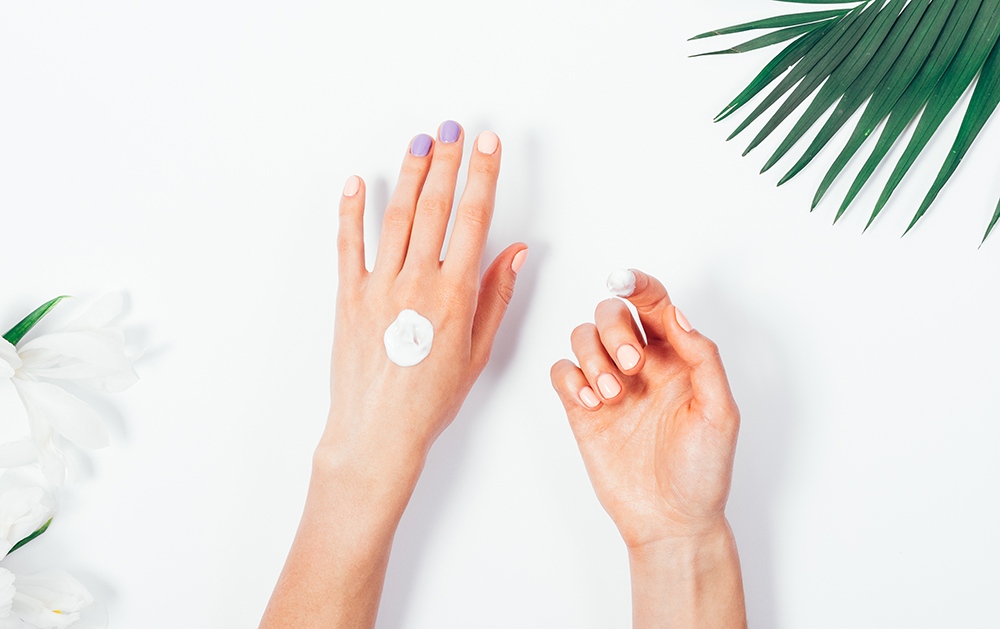
The skin is an organ designed to protect the body and act as a barrier to, among other things, toxins. And it’s great at its job. As stated above, some of the ingredients that are applied to skin, those that are small enough or don’t get stuck on the skin’s surface, penetrate the surface. Thumbs up if it’s a healthy ingredient that benefits your skin. Not so much if it’s a synthetic.
Some of the chemical ingredients that penetrate come into contact with natural enzymes in the skin that can either activate, deactivate, or alter the chemical into a new compound.
And then there are ingredients that enhance the chances of other ingredient penetrability, appropriately known as penetration enhancers. These ingredients penetrate the skin and decrease barrier resistance, allowing other ingredients to enter along with them. Penetration enhancers are commonly used for transdermal medication delivery but be aware that they are also widespread in cosmetics. The Environmental Working Group (EWG) Skin Deep states that 56% of all personal care products contain penetration enhancers. This may seem like a good thing when we are thinking of desirable active ingredients like antioxidants, but synthetics that may irritate your skin or increase your body burden can also be carried in further and at greater amounts due to penetration enhancers.
Two types of skincare ingredients that definitely absorb into skin
One type of ingredient that is most likely to absorb into skin is the scent. Natural essential oils and synthetic fragrances are small, oil based molecules and that makes them easy to absorb into skin. This makes the scent of your skincare product something to really think about because that scent is ending up in your bloodstream.
Oils of any kind have a much higher chance of absorbing into skin versus water based ingredients because they can go through the intercellular matrix or through the follicular route. In one study on skin absorption of natural oils safflower and coconut oils were used to massage newborn babies four times a day for five days. At the end of the study the blood samples taken from the babies showed that the group that was massaged with safflower oil had higher levels of unsaturated fatty acids in their bloodstream. The group that received coconut oil had higher levels of saturated fats in their blood. The skin of babies is extra thin, but this shows how much oils do absorb into skin. No additional penetration enhancers were used, just plain oils. That should make you think a little more about the quality of the oils you put on your skin!
The Size of the Molecule Matters for Skin Penetration
Wondering at what molecule size skin penetration is most likely? The 500 Dalton Rule is a good principle to stick by. A Dalton is a unit of measurement roughly equivalent to 1 g/mol. Chemicals that absorb into skin through cells are generally under 500 Dalton. Both beneficial and irritating ingredients can have a molecule size less than 500 Dalton.
Which chemical compounds in your skin care should penetrate skin and which should simply condition the surface is something cosmetic chemists should be thinking about in formulating recipes to make an effective skin care product. Safety is the big concern with skin absorption.
For one example skin brightening ascorbyl palmitate has a molecular weight of 414.5 g/mol, and its oil loving ester structure means it has an easier time penetrating skin than water based ascorbic acid. The choice of ingredient really does affect if you'll get what you pay for from your skincare.
Molecular weights of active chemical compounds from your natural and plant based skincare products:
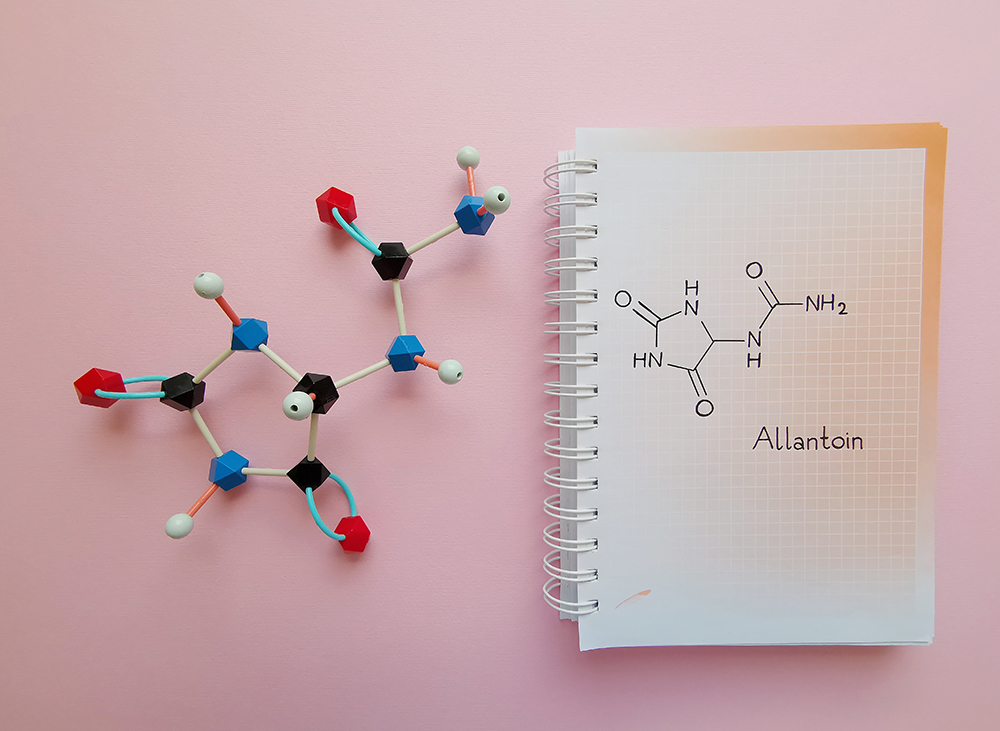
Allantoin (found in comfrey and chamomile) – 158.2 g/mol
Caffeic acid (found in yerba mate) – 180.16 g/mol
Caffeic acid has been shown to be capable of skin penetration when used in different types of cosmetic recipes.
Salicin (found in willowbark) – 286.28 g/mol
Gentisic acid (found in gentian root) – 154.12 g/mol
Glabridin (found in licorice root) – 324.4 g/mol
Salidroside and Rosavin (two types of active compounds found in rhodiola) - 300.3 and 428.4 g/mol respectively
Molecule size does not absolutely determine if a chemical can penetrate skin, though.
Some compounds with a molecule size that would seem to inhibit skin penetration can still be beneficial too.
Beta-glucans - These have a large molecule size of around several hundred thousand Daltons
Beta-glucans do have the ability to penetrate into the epidermis and dermis through the intercellular matrix, which was a surprise even to many scientists.
Coenzyme Q10 – 863.3 g/mol
This oil based molecule is larger than 500 Daltons but because it is oil based Coenzyme Q10 can penetrate skin through the intercellular matrix.
Glycyrrhizin (found in licorice root) – 822.94 g/mol
This water based molecule looks too large for skin penetration but Glycyrrhizin been shown to be able to get past the surface of skin when used in the right kind of cosmetic recipe.
Ginsenosides (found in ginseng root) – 801.01 g/mol
Penetration may not be the whole story. Ginsenosides seem a bit on the large side, and being water based they do not have an easy route through the intercellular matrix. However penetration and absorption are not everything! One of the primary activities of ginsenosides is to modulate inflammation, and they may not need to absorb into skin to do that. There are special cells in all layers of the skin, even up to the upper Stratum Corneum, called Langerhans cells. They are messengers in immune responses and so simply touching a chemical can instigate their response. Ginsenosides have been shown to interact with Langerhans cells, meaning they don't need skin penetration to cause a response from skin. This is also why some irritants don't necessarily need to penetrate skin to cause skin problems. Your immune system is active through every level of the skin.
What Happens After Chemical Absorption Through Skin?
If the size of the ingredient is small enough, or if circumstances improve their chances, they absorb into the bloodstream. Whether or not the synthetics that get absorbed into the bloodstream will cause some sort of damage to the body depends on how much gets absorbed and how it reacts in the body.
As for how long chemicals that are absorbed into the body hang around and how they behave? Well, that depends. Many are filtered relatively quickly out of the body through organs like the liver, lungs, and kidneys. Others may remain in bone or fat for several years. Still others may have a toxic effect through contact with certain organs and tissues, or other compounds already in the body.
The way chemicals react in the body depends not only on the chemical itself, but the individual. Age, sex, genetic background, previous exposures, and diet all affect the way the body manages chemicals and any adverse effects. Each person is effectively a unique chemical experiment with a different cocktail of compounds and reactions going on at all times. This is what makes getting data on how harmful many compounds may be very complicated, as none are ever acting alone.
Because it’s difficult to know exactly which ingredients absorb into skin, how long they stay in the body, and if they will cause adverse reactions by simply reading an ingredient listing, it’s best to choose products made with ingredients you actually want in your system.
Tips to Improve Skin Penetration of Healthy Skincare
If you're using skincare products with healthy ingredients then you want to help them get into your upper layers of skin. That's where they can help moisturize and protect the skin, plus improving the look of concerns like brightness, fine lines, and elasticity. Your routine can help determine how much gets into skin with these easy tips.
Tip #1 - Look for natural ingredients that enhance skin penetration of healthy nutrients
Healthy ingredients must have the ability to penetrate skin in order to work their magic. Organic soy lecithin has the ability to naturally enhance penetration of water-based nutrients that would otherwise have trouble reaching deeper into the skin, which is one big reason this natural ingredient is a big help in improving the results of natural skincare. Unlike synthetic penetration enhancers, like propylene glycol, an organic soy lecithin can also offer skin additional benefits, like preventing moisture loss from the skin and providing nutrients like phospholipids.
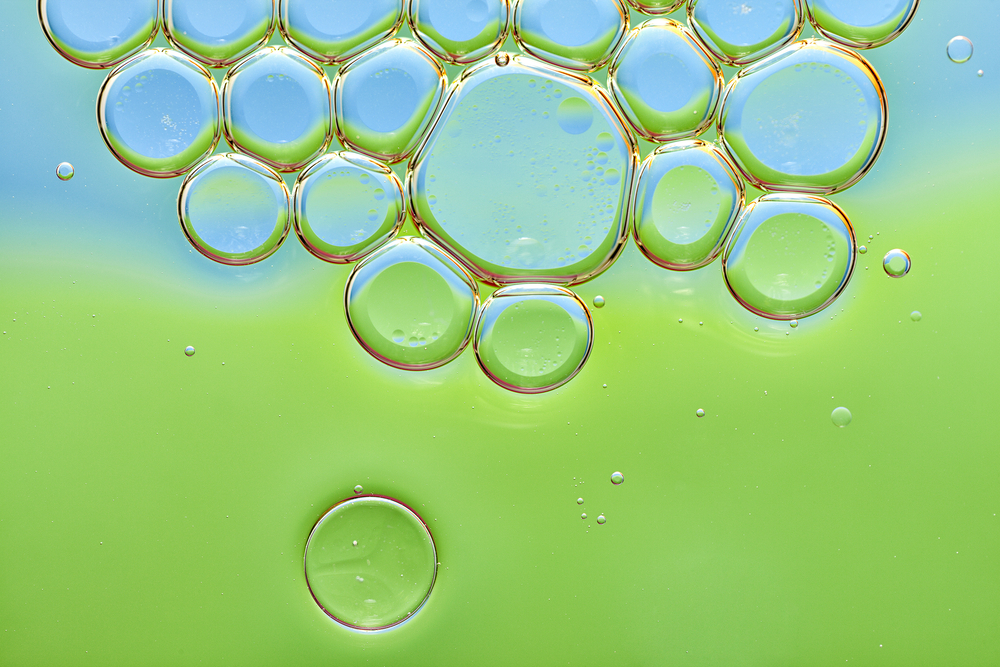
Tip #2 - Use emulsions, hydrating toners, and oils together to improve skin penetration
Emulsions, a combination of oils and water, are also an effective delivery method to improve skin penetration of the active ingredients you want. You may reach for a facial oil when your skin feels dry but still end up with parched feeling, dull skin with the appearance of fine lines and wrinkles. Oils are great for conditioning skin and providing nutrients that can actually penetrate the skin through pores and the intracellular matrix, but if skin is dehydrated your oils will still have more trouble taking those compounds in. Hydrated skin allows better penetration than dehydrated skin. Think of the oil and water combo as a one-two punch for your happiest, best looking skin. As an added bonus, it also helps other nutrient-rich ingredients to penetrate skin, as some are water soluble and some are oil soluble.
Here’s how to get the most from your product if you’re using a straight up oil blend rather than a product that is emulsified, like a serum. Mist clean skin with a facial mist and then apply your emulsion based moisturizer onto damp skin morning and night. Now that skin is fully hydrated you can apply a little facial oil over the top to finish. The pure oil applied last will help lock in the water based hydration from the previous steps, and will absorb much better when applied to fully hydrated skin. You will see and feel the difference almost instantly.
Tip #3 - Warm your skin to improve the penetration rate of your skincare products
Temperature has a big effect on how much your skincare products will penetrate skin, and specifically warm skin will have better absorption through skin than cold skin. The temperature of the skin increases diffusion of the compounds applied, and warmer temperatures also affect the actual structure of the skin cell layers themselves, increasing permeability. Consider doing a compress with a warm, moist towel first before applying serums and moisturizers to boost the rate that your natural skincare products will penetrate into skin.
Tip #4 - Exfoliate lightly before applying serums and moisturizers
Removing skin cells that are at the end of their life cycle can help your other products, like antioxidant rich serums and moisturizers, penetrate skin more easily. Even something as gentle as a terry washcloth can provide light exfoliation. Enzymes from papaya or other fruits will also gently exfoliate the skin and help enhance skin penetration of healthy compounds so they can work to improve the appearance of skin. Be careful not to overdo exfoliation as too much can irritate skin and cause problems instead of helping.
Disclaimer: The information contained on this site is general in nature and for informational purposes. It is not meant to substitute for the advice provided by your own physician or other medical professional. None of the statements on this site are a recommendation as to how to treat any particular disease or health-related condition. If you suspect you have a disease or health-related condition of any kind, you should contact your health care professional immediately. Please read all product packaging carefully and consult with a healthcare professional before starting any diet, exercise, supplementation or medication program. Cosmetic products have not been evaluated by the Food and Drug Administration and are not intended to diagnose, treat, cure, or prevent disease.


